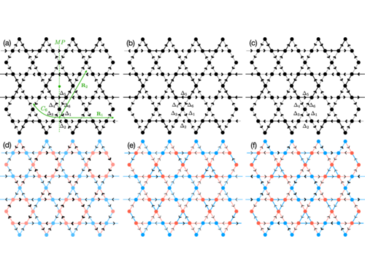F. Grandi, A. Consiglio, M. A. Sentef, R. Thomale, and D. M. Kennes
Phys. Rev. B 107, 155131 (2023)
Kagome metals AV3Sb5 (A=K,Rb,Cs) exhibit an exotic charge order (CO), involving three order parameters, with broken translation and time-reversal symmetries compatible with the presence of orbital currents. The properties of this phase are still intensely debated, and it is unclear if the origin of the CO is mainly due to electron-electron or electron-phonon interactions. Most of the experimental studies confirm the nematicity of this state, a feature that might be enhanced by electronic correlations. However, it is still unclear whether the nematic CO becomes stable at a temperature equal to (Tnem=TC) or lower than (Tnem<TC) that of the CO itself. Here, we systematically characterize several CO configurations, some proposed for the new member of the family ScV6Sn6, by combining phenomenological Ginzburg-Landau theories, valid irrespective of the specific ordering mechanism, with mean-field analysis. We find a few configurations for the CO that are in agreement with most of the experimental findings to date and that are described by different Ginzburg-Landau potentials. We propose to use resonant ultrasound spectroscopy to experimentally characterize the order parameters of the CO, such as the number of their components and their relative amplitude, and we provide an analysis of the corresponding elastic tensors. This might help to explain which mean-field configuration found in our study is the most representative for describing the CO state of kagome metals, and it can provide information regarding the nematicity onset temperature Tnem with respect to TC.

![[Translate to English:]](/fileadmin/user_upload/fachbereiche/fb1/lmcqm/logos/lmcqm-logo-3-padded-up-20.png)
